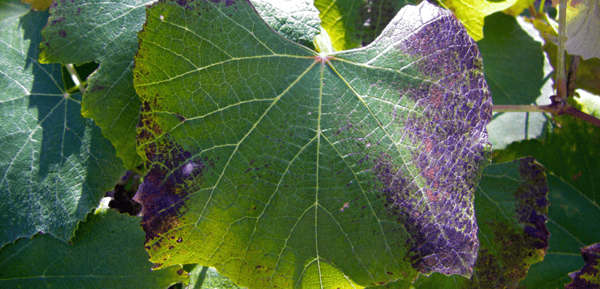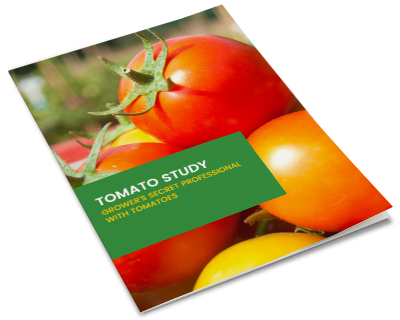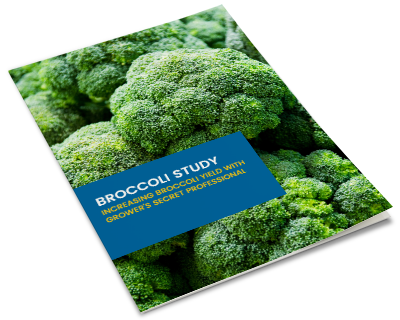|
Posted By: Wesley Chun, Ph.D. / |
By Dr. Wes Chun Ph.D
Chief Science Officer, Grower's Secret
 Phosphorus, like nitrogen, is a member of the pnictogen group and was the thirteenth element to be discovered and the first element that was chemically discovered by Hennig Brand in 1669. It is one of the three major essential elements needed by plants simply because of the amounts that are utilized by the plant. Phosphorus is the only element that was discovered through a disgusting process involving the concentration of urine.
Phosphorus, like nitrogen, is a member of the pnictogen group and was the thirteenth element to be discovered and the first element that was chemically discovered by Hennig Brand in 1669. It is one of the three major essential elements needed by plants simply because of the amounts that are utilized by the plant. Phosphorus is the only element that was discovered through a disgusting process involving the concentration of urine.
Phosphorus is highly reactive so it is never found as a free element on earth. Normally colorless, phosphorus has different allotropes that exhibit different properties. White phosphorus and red phosphorus are the two most common allotropes. Others include yellow, scarlet, violet, and black phosphorus. White phosphorus is a tetrahedral P4 molecule that is a soft, waxy solid. It is the least dense, most volatile, and most reactive of the phosphorus allotypes. When exposed to oxygen, white phosphorus glows in the dark with a tinge of green and blue. It is flammable and pyrophoric (self-igniting) when exposed to air leaving a garlic odor. It is insoluble in water but soluble in carbon disulfide. White phosphorus gradually changes to red phosphorus through a process that is accelerated by light and heat. Red phosphorus is less reactive than white phosphorus and turns darker with prolonged heating or storage. Violet phosphorus is formed when cooling red phosphorus at high temperatures. Black phosphorus is the least reactive allotype that is formed by heating white phosphorus under high pressures or by using metal salts as catalysts.
Phosphorus is the most abundant pnictogen in the Earth’s crust. It is widely distributed in minerals as phosphates (PO43-) in inorganic phosphate rock. Phosphates are required for all known forms of life and are a component of DNA, RNA, ATP, and phospholipids. Organic sources include urine, bone ash, and guano. The average adult human contains about 0.7 kg of phosphorus, 85-90% of which is in bones and teeth, the rest in soft tissues and extracellular fluids.
Phosphorus in Plants
Annual plants require large amounts of phosphorus. Plants grown in cold weather with limited roots and rapid top growth are high P users. Established plants, trees, shrubs, and vines in warm climates require the least amount.
Soil is a major pool of phosphorus. Phosphorus enters the plant through root hairs, root tips, and the outermost layers of root cells but can also be absorbed by leaves. Mycorrhizal fungi growing in association with plant roots can facilitate phosphorus uptake. Phosphorus is taken up mostly as dihydrogen phosphate (H2PO4-), but some is also absorbed as hydrogen phosphate (HPO42-), this latter form increasing as the soil pH increases.
Once inside the plant root, P may be stored in the root or transported to the upper portions of the plant. Through various chemical reactions, it is incorporated into organic compounds, including nucleic acids (DNA and RNA), phosphoproteins, phospholipids, sugar phosphates, enzymes, and energy-rich phosphate compounds such as adenosine triphosphate (ATP). It is in these organic forms as well as the inorganic phosphate ion that P is moved throughout the plant, where it is available for further reactions.
Phosphorus plays a vital role in virtually every plant process that involves energy transfer. High-energy phosphate, held as a part of the chemical structures of adenosine diphosphate (ADP) and adenosine triphosphate (ATP), is the source of energy that drives the multitude of chemical reactions within the plant. When ADP and ATP transfer the high-energy phosphate to other molecules (termed phosphorylation), the stage is set for many essential processes to occur.
Photosynthesis is an important and essential chemical reaction in pants. Photosynthesis is the utilization of light energy in the presence of chlorophyll to combine carbon dioxide and water into simple sugars. Light energy is captured in ATP. The ATP is then available as an energy source for photosynthesis (and other energy requiring reactions) in the plant. The sugars produced from photosynthesis are used as building blocks to produce structural components for cells and storage components for the plant.
Phosphorus is a vital component of the substances that are building blocks of genes and chromosomes. Thus, it is an essential component in the process of carrying the genetic code from one generation to the next in the form of DNA. DNA is the “blueprint” for all aspects of plant growth and development. An adequate supply of P is essential to the development of new cells and to the transfer of the genetic code from one cell to another as new cells are formed.
Large quantities of P are found in seeds and fruit where it is believed they are essential for seed formation and development. Phosphorus is also a component of phytin, a major storage form of P in seeds. About 50 percent of the total P in legume seeds and 60 to 70 percent in cereal grains is stored as phytin or closely related compounds. An inadequate supply of P can reduce seed size, seed number, and viability.
Phosphorus also plays an important role in nutrient transport in plants. Plant cells can accumulate nutrients at much higher concentrations than are present in the soil solution that surrounds them. This allows roots to extract nutrients from the soil solution where they are present in very low concentrations. Movement of nutrients within the plant depends largely upon transport through cell membranes, which requires energy to oppose the forces of osmosis. Here again, ATP and other high energy P compounds provide needed energy.
Phosphorus in Soils
Phosphorus in soil exists either in organic or inorganic forms. Organic phosphorus is derived from plant and animal debris and requires microbial activity for mineralization. Plant and animal remains contribute phytin, sugar phosphates, phospholipids and nucleic acids that decompose and form an inorganic phosphate pool. Microbial activity generates the soil organic phosphate. Approximately 15 to 80% of the soil phosphorus is in organic form depending on the nature and composition of the soil. For example, higher percentages are typical for peat soils. Inorganic phosphorus are compounds where P is combined with Ca, Mg, Fe, Al, and with clay minerals. Both groups of phosphorus are not available until microbial activity involving phosphatases mineralizes the phosphorus into plant available primary and secondary orthophosphates.
Once mineralized, the phosphorus is considered to be in the solution pool. It is the only form of phosphorus that is immediately available to plants. The inorganic phosphates are considered to be in an active pool that is the main source of phosphorus via mineralization. This pool is derived from plant and animal debris, soil phosphorus, and added inorganic phosphorus fertilizers. Note that soft rock phosphate which is considered “organic” is supplied in the inorganic form of a phosphate chelate and microbial activity is needed to mineralize the phosphate into plant available forms.
The concentration of P in the solution pool is generally low because of plant uptake and removal. Hence, supply to the active P pool depends on cultural practices and exogenous inorganic addition of P.
Phosphorus Deficiency Symptoms
Diagnosing phosphorus deficiencies can be difficult. Deficiencies are likely to occur in compacted, poorly aerated soil that are low in organic matter and symptoms may be more evident early in the season when the soil temperature is low. The first indication is a stunted plant. Roots are not well developed. Leaves may be distorted and in severe deficiencies dead spots may occur or leaf tips may appear burned. Since phosphorus is mobile in the plants, older leaves tend to show symptoms first. Older leaves may appear darker blue-green or a reddish-purple. Some may have yellow leaves that abscize. Certain plants such as corn may show a reddish or purple color on the margins of lower leaves and stems. Tomatoes, lettuce, corn and brassicas may have a purple color on the stems and undersides of leaves. Strawberry leaves will turn red or red-brown usually from the outside - in. Legumes will have a nitrogen deficiency because the lack of phosphorus affects the nitrogen fixing ability of the symbiotic bacteria. Overall, a phosphorus deficiency can lead to reduced yields and lower plant quality.
Fertilizing with Phosphorus
Phosphorus can be added to the soil in many different forms such as commercial fertilizers, animal wastes, biosolids, crop residues, rock phosphate, and bone or fish meal. Phosphorus fertilization should be managed carefully to meet crop needs. Over fertilization may result in leaching from the solution pool, or runoff that could result in environmental pollution issues.
Crop Responses to Phosphorus
Generally, proper phosphorus fertilization increases yields by improving nitrogen use efficiency. Since phosphorus supports root growth, plants are better able to withstand stresses.
Phosphorus Toxicity Symptoms
Excess phosphorus impedes the uptake of iron and or zinc thus causing iron and zinc deficiency symptoms. The bigger concern of excess phosphorus is environmental pollution.
Summary
Phosphorus is critical for growth of a healthy plant because of the critical roles it plays in plant growth, reproduction, and quality. However, it is a nutrient of concern because of its ability to cause environmental problems from leaching and runoff. Getting back to my old teaching days, remember “Top-Down-All Around” when you think of NPK and your plant nutrition needs. Thus, the main take home message is phosphorus = healthy roots.






